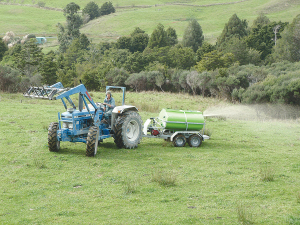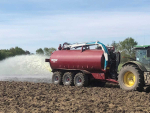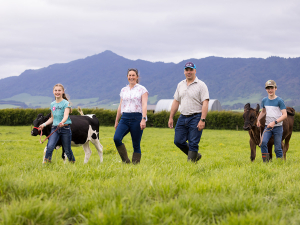Liquid fertilisers are foliar fertilisers.
A foliar fertiliser is a fertiliser product that is designed to be applied directly to the leaves of the plant. Although the first recorded use of foliar fertilisers was in 1843, this practice remained limited for years.
A lot of research has been done on the benefits of foliar fertilising in the last 30 years. It was noticed that applying synthetic chemical fertilisers like urea, phosphates and potassium salts etc could be absorbed directly by the plants and provide fertilising benefits, and that if this was done the amount of fertiliser could be reduced.
There were limitations as not enough was known about how to penetrate the waxy cuticles of foliage or even why this occurred at all. Use of chelating agents such as Ethylenediaminetetraacetic Acid (EDTA) have been used to improve trace mineral uptake, but environmental concerns are beginning to limit the use of EDTA. In recent years the benefits of amino acids as chelating agents have been proven and these are becoming more widely used.
Foliar feeding has been found to be beneficial in the following ways:
1. When soil conditions such as drought or cold conditions limit the availability of nutrients to the plant from the soil through transpiration.
2. Reduces the waste of fertiliser through leaching, runoff or volatilisation as occurs with many solid fertilisers.
3. Reduces the risk of over fertilising that has been found to have detrimental effects on beneficial soil organisms such as earthworms and beneficial microbes such as nitrogen fixing bacteria.
4. Faster uptake of nutrients resulting in quick response especially when nutrient deficiencies are present. This could be due to low nutrient levels in the soil or conditions such as low pH that prevents nutrient availability.
5. Ideal method for the concept of a little more often which reduces waste and improves soil health when formulated correctly.
Foliar feeding is more targeted and thus more environmentally friendly than bulk soil applied fertiliser.
In addition to the fact that amino acids have been found to be very useful chelating agents for trace minerals such as iron and zinc, and commercially synthesised amino acids like glycine (commonly used as chelating agents in some commercial foliar fertilisers), research has shown that mixed amino acids have additional benefits, some of which are:
Attract moisture to the foliage to which they have been applied, which in turn assists with amino acid and other nutrient absorption.
They act as building blocks for proteins that are essential for plant growth and function.
They stimulate plant growth and enzyme production and activity.
They work synergistically with other nutrients to the benefit of the plant.
They reduce fertiliser requirement by complexing nutrients and helping to transport them to where they are needed in the plant.
They contain not only nitrogen but carbon and some like methionine and cystine also contain sulphur.
They have a stimulating effect on root growth which in turn allows for more efficient absorption of nutrients from the soil.
They improve photosynthesis, resulting in higher carbohydrate production which benefits the plant and the beneficial root dwelling organisms.
They also feed the beneficial organisms living within the plant that help the plant in different ways including fighting off disease and plant eating insects.
Enter Nitrosol, the brainchild of Dr Peter Kauzal, a veterinary scientist who worked in Australia fifty years ago. He developed this new generation liquid fertiliser by using a by-product of the New Zealand agricultural industry with a good source of nitrogen, phosphorous and potassium. He identified that the soil, and therefore pasture, plants and crops were lacking vital nutrients, trace elements and minerals.
Agricultural stock health was struggling in some areas due to the shortage of critical trace minerals that had caused problems, none more-so than the so-called “bush sickness” in New Zealand, due to natural deficiencies of cobalt in our volcanic soils.
Kauzal strongly believed that the best way of providing the deficient minerals was through the pasture that the stock was grazing on, and so he went about developing a liquid fertiliser that could be sprayed onto the pasture and be rapidly absorbed by the pasture to stimulate good pasture growth, as well as provide the essential minerals that were in short supply. And so Nitrosol, a liquid foliar fertiliser was born.
His development included a process to liquidise and stabilise this by-product, at the same time introducing key trace minerals such as zinc, selenium and cobalt. He knew that the benefits for plants was greater than expected and had something to do with the use of hydrolysed protein. Later research into the benefits of foliar applied amino acids would help to explain the extraordinary results that were seen with the product.
Recently we have witnessed a paradigm shift in the mindset of many farmers and growers, towards taking greater care of their soil biology in the knowledge that it is the sustainable path for the future, to provide more nutritiously dense food products for animals and humans.
Bernard Kimble is the technical manager, Nitrosol Ltd


















